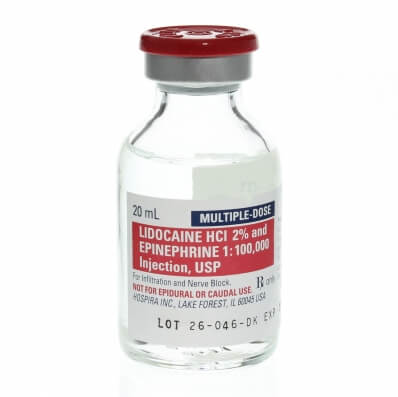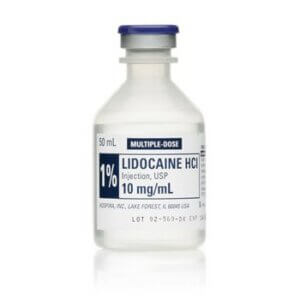
Lidocaine HCl 1%, 10 mg / mL Injection Multiple-Dose Vial 50 mL
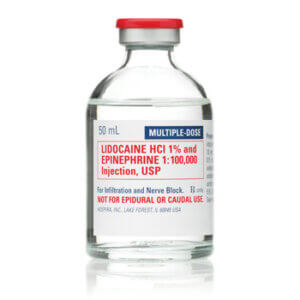
Lidocaine HCl / Epinephrine 1% - 1:100,000 Injection Multiple-Dose Vial 50 mL
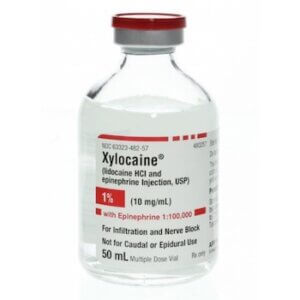
Xylocaine® with Epinephrine Lidocaine HCl / Epinephrine 1% - 1:100,000 Injection Multiple-Dose Vial 50 mL
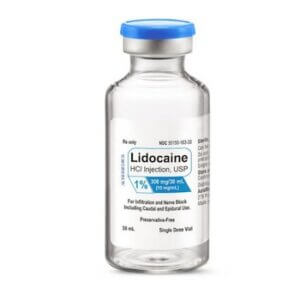
Lidocaine HCl, Preservative Free 1%, 10 mg / mL Injection Single-Dose Vial 30 mL
As a local anesthetic, Lidocaine works quickly to numb specific areas of the body, rendering them painless during minor medical procedures. Lidocaine creams, gels, and patches are commonly used by dentists, surgeons, and medical professionals to make patients more at ease and reduce pain. Lidocaine’s effectiveness in treating abnormal heart rhythms, in addition to its local anesthetic effects, makes it a prized asset in cardiac care facilities and emergency settings.
In this article, we aim to shed light on the diverse dosage forms of Lidocaine and their respective strengths, showcasing the flexibility it offers in tailoring treatments to individual needs. From creams and gels for superficial relief to injections for profound anesthesia during surgeries, the spectrum of Lidocaine’s dosage options ensures its indispensability in modern medical practice.
What is Lidocaine?
Lidocaine is a local anesthetic that can be administered via suppositories, topical applications, or even injections. Additionally, it is effective as an antiarrhythmic agent for the management of ischemic and myocardial infarction-related ventricular arrhythmias. The sodium channels it blocks and the heart contractions it reduces make it a class Ib antiarrhythmic. Other well-known brand names for lidocaine are Xylocaine, Lidoderm, and Lidocream.
A variety of other medications, such as Amiodarone, Mexiletine, Procainamide, and Sotalol, belong to the same class and are used to treat heart rhythm disorders known as arrhythmias. It is recommended that a medical professional evaluate the patient’s condition, medical history, and arrhythmia severity before deciding on a course of treatment.
Lidocaine is commonly used to numb the gums prior to dental procedures, and it is also commonly used to reduce pain associated with the insertion of intravenous lines and minor surgical procedures.
Lidocaine Mechanism of Action
When injected or applied topically, lidocaine acts as a local anesthetic by preventing the transmission of nerve signals. This is achieved by preventing the generation and transmission of nerve impulses by blocking sodium ion influx through the membranes of nerve cells. Lidocaine provides local anesthesia by temporarily numbing the nerves, thereby reducing the sensation of pain.
Lidocaine has additional medical applications as an antiarrhythmic agent for the treatment of cardiac arrhythmias. By inhibiting sodium channels in heart muscle cells, its therapeutic effect is to restore a normal heart rhythm by calming the electrical activity of the heart. Different medical applications and routes of administration (topical, injectable, etc.) may result in slightly different mechanisms of action, but the basic principle involves its ability to block sodium channels and reduce nerve transmission.
Uses of Lidocaine
The importance of Lidocaine as a local anesthetic to modern medicine is immeasurable. It’s a lifesaver as a strong local anesthetic and antiarrhythmic agent, used to keep patients comfortable during painful procedures and in times of emergency. Because of its pinpoint precision and profound efficacy, it has become an indispensable tool in contemporary medicine.
- Lidocaine is not only a useful local anesthetic, but also displays antiarrhythmic properties that are critical in the management of arrhythmias. By affecting the flow of ions in cardiac cells, lidocaine helps stabilize electrical activity in the heart, restoring normal rhythm in cases of ventricular arrhythmias. Since Lidocaine has been shown to reduce the risk of potentially fatal arrhythmias, it has become an indispensable tool in cardiac intensive care units and emergency rooms.
- Lidocaine works by blocking sodium channels in nerve cell membranes, stopping the spread of nerve signals and relieving pain. The process is very localized, so only the targeted area is affected, reducing the potential for systemic adverse effects. In the context of preventing potentially fatal arrhythmias, Lidocaine’s sodium channel blockade also helps regulate electrical impulses in the heart, stabilizing its rhythm.
Lidocaine Dosage Forms
Several formulations of lidocaine exist, each optimized for a different set of clinical circumstances. Lidocaine comes in a wide variety of formulations, giving medical professionals flexibility in how they treat pain and administer anesthesia.
Lidocaine Cream and Gel
Topical Lidocaine can effectively numb small areas of skin or mucous membranes. They come in handy in a variety of dermatological procedures, including biopsies, suture removal, and more minor skin surgeries. To further ensure patient comfort, these creams and gels are applied to the skin prior to laser treatments or tattoo procedures. Due to their rapid onset and localized effect, regional anesthetics are frequently used in place of general anesthesia during outpatient procedures because they allow patients to recover more quickly.
Lidocaine Ointment
Lidocaine ointment is commonly used as a topical medication to provide relief from localized pain and discomfort. It belongs to a group of drugs called local anesthetics, which work by temporarily numbing the area where it is applied. Lidocaine ointment is particularly effective in providing relief from pain caused by skin conditions such as sunburn, insect bites, and minor burns. It can also be used to numb the skin before certain medical procedures, such as minor surgeries, injections, or dental work.
Additionally, lidocaine ointment may be prescribed to manage pain associated with hemorrhoids or anal fissures. The ointment is usually applied directly to the affected area, providing immediate relief. It is important to follow the instructions provided by your healthcare professional regarding the strength and frequency of application to ensure its safe and effective use.
Lidocaine ointment offers a convenient and relatively quick solution for managing localized pain, allowing individuals to find comfort and relief from their discomfort.
Lidocaine Patches
For long-term pain relief, many people turn to lidocaine patches. These adhesive patches are formulated to stay in place on the skin and gradually release Lidocaine to provide long-lasting pain relief. Conditions such as neuropathic pain, post-herpetic neuralgia, and musculoskeletal pain benefit greatly from their use. Lidocaine patches are a good option for patients who either cannot take or do not prefer oral pain medications because of their non-invasive and localized pain management.
Lidocaine Injection
When deep anesthesia is called for in a medical procedure or surgery, lidocaine injection is a necessity. Injections like these can effectively block pain signals and are administered by medical professionals directly into the affected area or near nerve clusters. Injections of lidocaine are commonplace in fields as diverse as dentistry, minor surgery, and medical diagnostics. Due to its rapid onset of action and dosing flexibility, Lidocaine injections are an indispensable tool for any medical professional.
Lidocaine Topical Solutions
For quick and easy anesthesia during minor procedures, consider using a lidocaine topical solution, which can be found in spray or aerosol form. The oral cavity can be numbed with these solutions prior to dental procedures like tooth extractions and fillings. They alleviate pain quickly and can be applied locally, making dental procedures more tolerable for both the patient and the dentist.
Lidocaine Dose
Depending on the patient’s needs and the nature of the procedure, doctors can prescribe a different strength of lidocaine for each of the drug’s various dosage forms.
- The typical concentrations of lidocaine found in creams and gels are 2-5%. The dosage strength selected is determined by the treatment’s intended use and the desired level of anesthesia.
-
- The pain relief provided by lower concentrations of Lidocaine, such as 2%, is sufficient for minor superficial procedures without requiring extensive anesthesia.
- However, more invasive procedures that call for deeper anesthesia or patients with increased sensitivity to pain may benefit from a higher concentration, such as 5% Lidocaine.
- There is a wide range of patch strengths for lidocaine, from 1.8% to 5%. The efficacy of these patches for relieving pain depends on how much Lidocaine they contain.
-
- Milder pain management or patients with sensitivities to higher dosages often call for lower concentrations, such as 1.8%.
- However, the 5% patches are more effective and last longer, making them a good choice for chronic pain or ongoing discomfort.
- The usual concentrations of lidocaine injections are between 0.5% and 2%
-
- Location, procedure, and patient needs all play a role in determining the appropriate dosage strength for an injection.
- Lidocaine sprays and aerosols typically have a concentration range of 1% to 4%
Lidocaine Overdose and toxicity
Lidocaine overdose can have severe consequences on the body. If too much lidocaine is administered or absorbed into the body, it can lead to an overdose. Symptoms of a lidocaine overdose can range from mild to severe and may include dizziness, confusion, seizures, low blood pressure, and even cardiac arrest. In extreme cases, lidocaine overdose can be life-threatening.
Treatment for a lidocaine overdose often involves supportive care and the administration of antidotes, such as intravenous lipid emulsion therapy. It is important to seek immediate medical attention if a lidocaine overdose is suspected, as prompt treatment can help prevent further complications and potentially save a person’s life. Lidocaine overdose can be prevented by following proper dosage guidelines and closely monitoring its use, especially in cases where lidocaine is administered by healthcare professionals.
Factors influencing the choice of Lidocaine dosage strength
Factors that influence the choice of lidocaine dosage strength include different situations:
- Patient’s age
- Weight
- Overall health status
Healthcare professionals consider the severity of the pain or the extent of the medical procedure when selecting the appropriate strength. Additionally, the location of the procedure and the patient’s sensitivity to pain are essential factors to consider.
Individual variations in drug response and the presence of any underlying medical conditions may also influence the dosage strength chosen. For example, patients with liver or kidney impairments may require lower dosages to prevent excessive drug accumulation.
Moreover, the potential for adverse effects, such as allergic reactions or systemic toxicity, is taken into account when selecting the dosage strength. Striking a balance between providing effective pain relief and minimizing side effects is critical for optimizing patient outcomes.
Best Practices for Lidocaine Administration
Administering Lidocaine requires strict adherence to medical guidelines and the instructions provided by healthcare providers to ensure patient safety and efficacy of treatment. Whether in the form of creams, patches, injections, or topical solutions, the following best practices for Lidocaine administration are paramount:
Follow Medical Guidelines
When dispensing or administering Lidocaine, medical professionals must adhere strictly to all applicable regulations. The recommended dosages, maximum allowed strengths, and medical conditions covered by each medication type are all laid out here. Adherence to these standards promotes consistent and secure administration in a range of healthcare settings.
Individualize Dosage Calculation
Inadequate pain relief from underdosing or systemic toxicity from overdosing are both avoidable with careful dosing calculation. The correct dosage strength and amount must be determined after taking into account the patient’s age, weight, medical history, and the medical procedure itself.
Verify Patient Information
It is important for doctors to check the patient’s history, allergies, and current medications before giving them Lidocaine. This checks for any medical conditions that could negatively interact with Lidocaine or any other medications the patient may be taking.
Ensure the Correct Route of Administration
Lidocaine comes in a variety of dosage forms, each of which necessitates a unique method of administration. It is the responsibility of the healthcare provider to ensure that the correct route of administration is used. For instance, Lidocaine patches, shouldn’t be applied to open wounds or ingested.
Monitor for Adverse Effects
It is critical to keep an eye on patients before, during, and after Lidocaine treatment for early detection of any unwanted side effects. Itching, dizziness, and fatigue are some of the most commonly reported adverse effects. Extreme reactions like anaphylaxis or heart problems are uncommon but must be treated quickly by medical professionals.
Educate Patients
Proper education is necessary for patients using self-administered forms of Lidocaine, such as patches or topical solutions. Patients should be educated on the proper application method, potential adverse reactions, and when to seek medical attention.
Dispose of Unused Medication Properly
Unused Lidocaine medications must be disposed of properly to prevent accidental ingestion or misuse. It is important to properly dispose of any unused patches, creams, or solutions by following the guidelines set forth by your healthcare provider or by local law.
By following these guidelines, medical professionals can reduce the likelihood of negative outcomes and maximize the benefits of Lidocaine use. It is crucial to ensure patient safety and effective pain management or anesthesia during medical procedures that the correct dosage is calculated and administered.
Understanding Lidocaine Shortages
Lidocaine shortages can occur in the healthcare industry due to a combination of factors that disrupt the supply chain and production of the medication.
There are a number of causes for the Lidocaine shortage.
- First, shortages can occur if the demand for Lidocaine rises above supply, as may happen if medical practices, treatment protocols, or population growth all change.
- Second, the timely availability of Lidocaine can be impacted by issues related to its production, such as production delays, quality control issues, or equipment malfunctions.
- Third, natural disasters, transportation delays, or geopolitical issues can disrupt the complex supply chain involved in Lidocaine production, which includes raw materials, transportation, and distribution.
- Fourth, delays in production and distribution can be caused by regulatory challenges like new safety standards or additional testing requirements.
- Last but not least, pandemics and other global health crises can seriously impact the availability of essential medicines like Lidocaine, as healthcare systems struggle to keep up with surging demand and unexpected setbacks.
Impacts of Lidocaine Shortage
The potential impact of Lidocaine shortages on medical procedures and patient care can be significant:
1.Delayed Medical Procedures
Shortages of Lidocaine may lead to delays or cancellations of medical procedures that rely on the medication for pain management or anesthesia. This can result in prolonged patient suffering and discomfort.
2.Compromised Pain Management
Patients who require Lidocaine for chronic pain management or acute pain relief may face challenges in accessing the medication, leading to suboptimal pain control and reduced quality of life.
3.Increased Healthcare Costs
Shortages may force healthcare facilities to seek alternative medications or treatments, which could be more expensive. This, in turn, can lead to increased healthcare costs for both patients and healthcare providers.
4.Impact on Emergency Situations
Lidocaine is critical in emergency medical care, particularly for managing arrhythmias. Shortages can hinder prompt and effective treatment during critical situations, potentially compromising patient outcomes.
5.Healthcare Provider Decision-making
Healthcare providers may need to make difficult decisions regarding the allocation of limited Lidocaine supplies, prioritizing certain patients or procedures over others, which can create ethical dilemmas.
6.Patient Safety Concerns
In some cases, healthcare providers may resort to using Lidocaine from alternative sources or suppliers, raising concerns about the quality and safety of the medication.
Exploring alternative medications to Lidocaine
There are a few scenarios in which alternatives to lidocaine would be useful. Lido (Xylocaine) isn’t appropriate for everyone because it can cause adverse reactions in some people. Second, there are cases where lidocaine is ineffective for pain management, and other medications with different mechanisms of action may need to be considered.
Healthcare providers may also need to use other local anesthetics or antiarrhythmic agents in place of lidocaine when it is in short supply or the supply chain is disrupted. In the end, having a variety of options allows doctors to select the most appropriate and effective treatment based on the individual patient’s condition and history.
Alternatives to Lidocaine for antiarrhythmic use
Common antiarrhythmic drugs like Lidocaine can cause a range of unwanted side effects. If a patient has an adverse reaction to Lidocaine, there are several options for treatment. Only a qualified healthcare professional can decide based on individual patient conditions. In cases of recurrent ventricular arrhythmias, amiodarone is preferred over lidocaine. It is also effective against atrial fibrillation and atrial flutter.
- Atropine may be a useful alternative for patients with bradycardia as it can increase heart rate and enhance heart function.
- Like lidocaine, Mexiletine can also be used as an adjunct to Amiodarone in long-term therapy following an electrical storm.
- Sotalol, a beta-blocker, can be used to treat both ventricular and atrial arrhythmias, and procainamide can be used to treat atrial fibrillation.
Alternatives to Lidocaine for local anesthesia
Lidocaine, a commonly used local anesthetic, can have certain side effects. When facing side effects from lidocaine, various alternatives are available for local anesthesia.
- Diphenhydramine, an antihistamine, can serve as an alternative for local anesthesia during certain procedures.
- Tetracaine is a topical anesthetic commonly used in ophthalmology procedures.
- Procaine is another local anesthetic used in dentistry for procedures such as fillings and extractions.
- Chloroprocaine is useful for spinal and epidural anesthesia, especially in short procedures.
Additionally, Topicaine, a lidocaine gel alternative, is available for anorectal procedures, but it should not be used on other areas of the body. The choice of local anesthetic depends on the specific procedure, the patient’s medical history, and the level of pain, and should be determined by a qualified healthcare professional.
Frequently Asked Questions (FAQs)
Is it safe to take Lidocaine?
Unsupervised use of lidocaine can be harmful. If ingested, it can have dangerous effects on children. Lidocaine, like any other medication, can cause unwanted effects and pose risks. Lidocaine can cause allergic reactions or other side effects in some people. If you have any preexisting medical conditions or allergies, be sure to let your doctor know before receiving lidocaine.
What is Lidocaine most commonly used for?
Lignocaine (Lidocaine) is commonly used as a local anesthetic, which means it is applied to or injected into a targeted area of the body to provide temporary numbness and alleviate pain or discomfort.
What is the major side effect of Lidocaine?
Lidocaine can cause many side effects, some serious, depending on the dose and route of administration. Side effects include drowsiness, dizziness, headaches, nausea, vomiting, and a metallic taste. Allergies can cause anaphylaxis, urticaria, edema, bronchospasm, loss of consciousness, hyperventilation, and nausea. Ingestion can numb the mouth and throat. Lidocaine causes methemoglobinemia, which reduces blood oxygenation.
Why is there a shortage of Lidocaine?
Lidocaine is in shortage for a number of reasons. Eugia and Fresenius Kabi shared that it is in shortage due to increased demand, and according to Pfizer, they have manufacturing delays.
Is there a shortage of Lidocaine gel?
Yes, there is a shortage of lidocaine gel. 2% Lidocaine hydrochloride Topical Jelly is in shortage because the Akorn manufacturing plant ceased operations in February 2023.
Is there a Lidocaine patch shortage?
Yes, there is a lidocaine patch shortage. however, no exact reason is known as Par and Teva did not provide a reason for the shortage.
What is an alternative to Lidocaine?
Diphenhydramine, Chloroprocaine, Tetracaine, Tropicaine, and Procaine are effective alternatives for lidocaine anesthetic. Whereas, Amiodarone, Mexiletine, Atropine, Procainamide, and Sotalol are effective agents for lidocaine use as an antiarrhythmic agent.
What are the possible Lidocaine adverse effects?
Lidocaine has mild to severe side effects. Drowsiness, headache, confusion, seizures, coma, cardiac arrest, methemoglobinemia, and mouth and throat numbness may occur. Lidocaine causes anaphylaxis, urticaria, edema, bronchospasm, unconsciousness, hyperventilation, and nausea. Avoid misusing or overdosing lidocaine. These symptoms need immediate medical attention. Heart, liver, and blood patients should use lidocaine cautiously.
What are some common Topical Lidocaine brands?
There are several common topical lidocaine brands available for various medical procedures, including AneCream, Aspercreme with Lidocaine, BenGay, Blue Tube, CidalEaze, Ela-Max, LidaMantle, LidoHeal-90, Lidosense 4, Lidotral, Lidovix L, LMX 4, LMX 4 with Tegaderm, LMX 5, Lydexa, MENTHO-CAINE, Moxicaine, RectaSmoothe, RectiCare, Solarcaine, SOLUPAK, Xylocaine Topical, and ZiloVal. The brand of topical lidocaine used should be determined by a healthcare professional based on the specific procedure, the patient’s medical history, and the level of pain.
Get your Medical Supplies
Lidocaine holds a pivotal role in medical practice, serving as both a reliable local anesthetic and an essential antiarrhythmic agent. Its various dosage forms and strengths offer versatility in pain management and anesthesia, catering to the unique needs of patients and medical procedures. From creams and gels for superficial relief to injections for profound anesthesia, Lidocaine’s array of options ensures its indispensable presence in modern healthcare.
Pipeline Medical is a trusted and reliable source of medical supplies, including Lidocaine and various other essential medications. As a reputable medical supplier, Pipeline Medical ensures that healthcare professionals (HCPs) can count on them to meet their medical needs promptly and efficiently.
